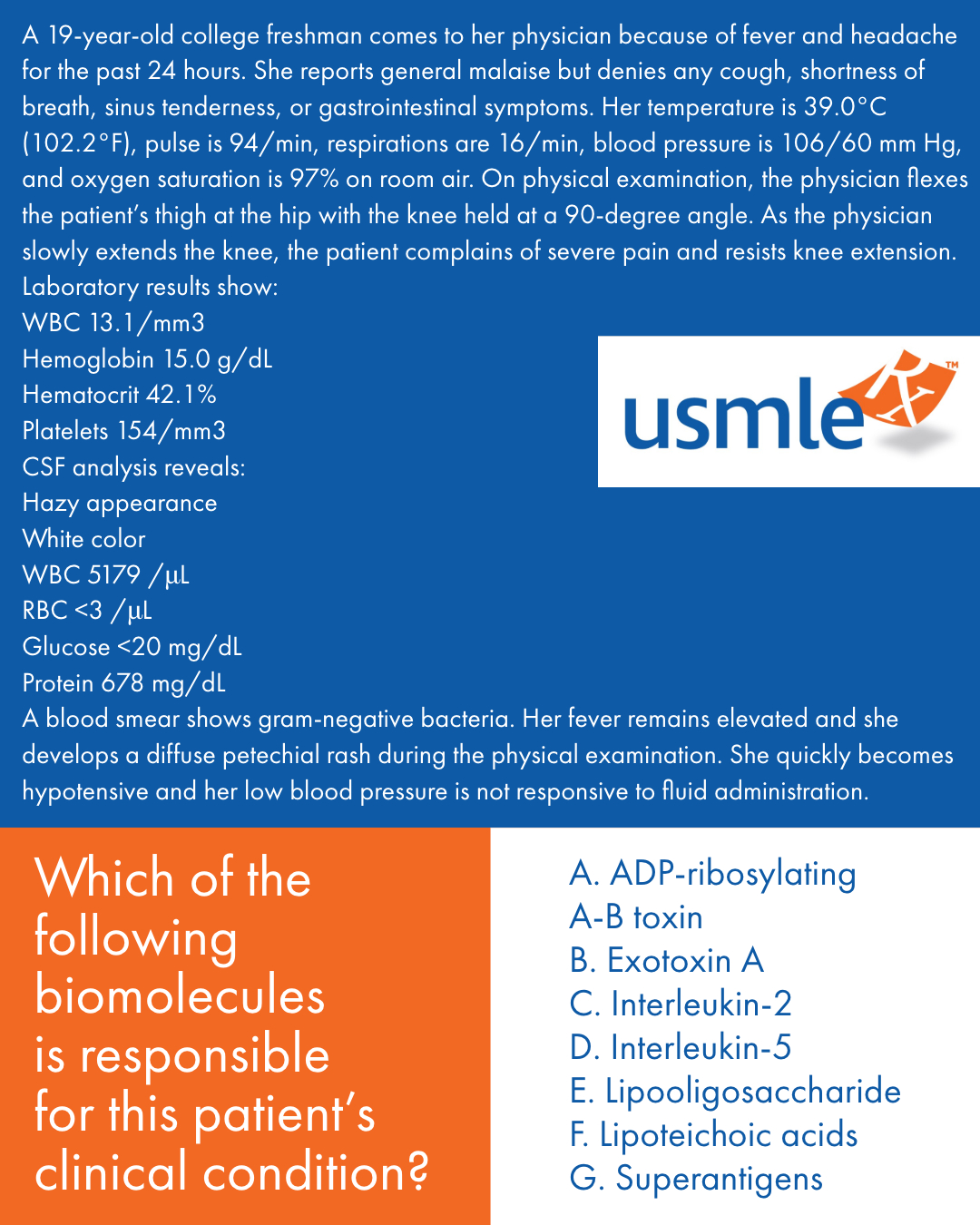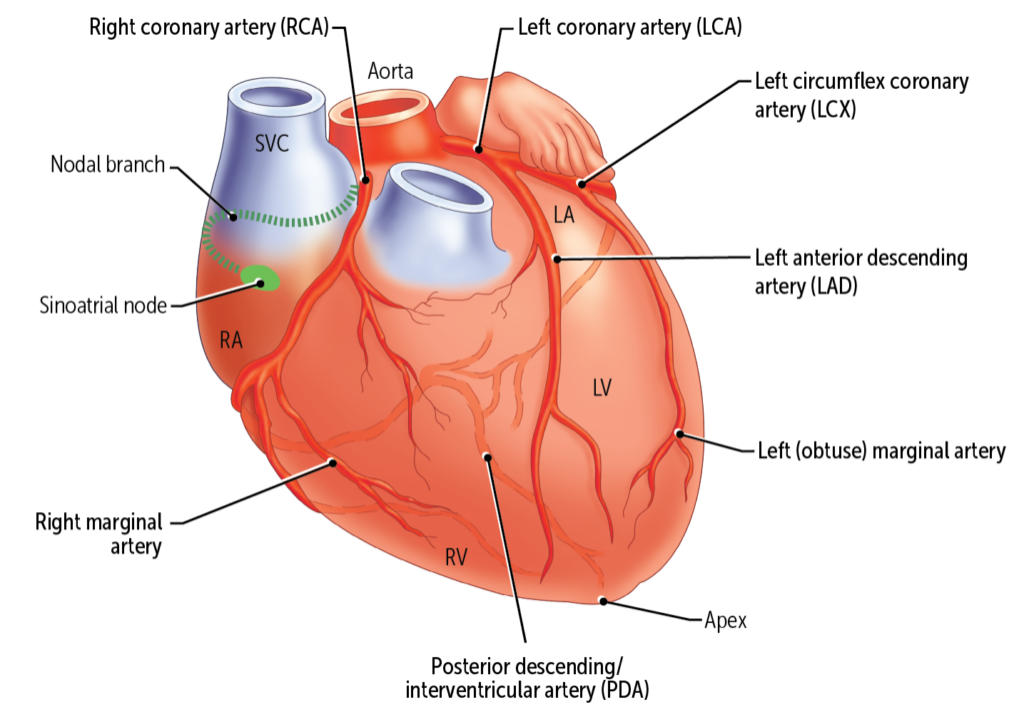This week’s Step 1 inquiry is microbiological, as we turn our attention back to bacteria. Along with naming the biomolecule that brought about this collegiate patient’s condition, tell us what her underlying condition most likely is along with what caused it.
Are you getting serious about Step 1? The holidays are approaching, which means more opportunities to study! Woo-hoo! But if you don’t have the right study tools, that time may wind up being misspent. Take the Rx Challenge and spend 7 days with USMLE-Rx, free of charge. We’ll show you why more med students are opting for Rx to help them succeed on their board exams.
Learn more: http://go.usmle-rx.com





E. Lipooligosaccharide (case of Waterhouse-Friederichsen syn)
B
E
E)LOS Shock/Endotoxic shock/WATERHOUSE FRIDERICHSEN Syndrome severe complication of Meningococcemia
E
Excellent!
eeee
E
This patient presents with headache, positive Kernig sign (severe stiffness of the hamstring), elevated WBCs, elevated protein, low glucose, and gram-negative bacteria on smear. She most likely has bacterial meningitis, and given the Gram stain result, it is most likely caused by Neisseria meningitidis, a gram-negative bacterium. A patient with this clinical scenario is in septic shock, which is a known complication of severe meningococcal infections. N meningitidis, in particular, can cause Waterhouse-Friderichsen syndrome, which involves a constellation of adrenal insufficiency, fever, disseminated intravascular coagulation (DIC), and shock.
Whereas many gram-negative bacteria possess an endotoxin known as lipopolysaccharide (LPS), N meningitidis expresses an analogous endotoxin known as lipooligosaccharide (LOS). LOS contributes to the development of septic shock in patients with severe meningococcal meningitis by stimulating inflammatory cytokines the same way LPS does in other gram-negative bacteria. Both LPS and LOS act as pathogen-associated molecular patterns which are recognized through pattern recognition receptors (PRR) present on the cells of the innate immune system including macrophages, monocytes, and neutrophils.Inflammatory cytokines released by these innate immune-system cells subsequently lead to massive vasodilation, causing hypotension seen in shock.
E -NEISSERIA GONNORHEA INFECTION
neisseria meningitidis
E Lipopolysaccharides ; Neisseria meningitidis a Gram Negative Bacteria causing release of endotoxin